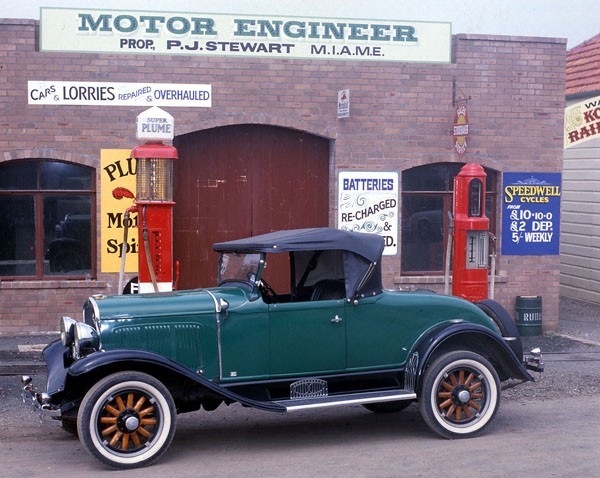Immediately after World War II, most cars being produced were rehashes of pre-war models but as the fifties arrived new models and engines became more prevalent. After rationalisations, mergers and some fallings-by-the-wayside during the early fifties the choice of models was reduced to a more manageable number and technical progress was accelerated.
American cars were built on much the same layouts as before; front engines with rear drive, using six cylinder power units on the standard, and V8s on the luxury models. Automatic transmission gave rise to a generation of drivers who thought the clutch was a back-seat pastime and a new mood began to filter into the motoring populace _ that of non-aggressive driving, a principle which has sensibly been held to the present day in the US.
In 1952 the Chrysler Corporation of USA released the DeSoto Firedome 8. The 1950s period was known as the Chrome Age and many American cars of the period suffered from the disease known as `chrome-itis’. This new model from DeSoto personified the typical Yank Tank with all of its chrome embellishments. Looking at the slab-sided monument to the mouth-organ grille from the hindsight of later years, it’s surprising that DeSoto managed to sell 97,000 models of this car in 1952.
The car typified all that was wrong with Chrysler styling during this period. Although the 4.5-litre, 160-bhp, over square V8 introduced in 1952 boosted sales in 1953 to nearly 130,000 units, they never managed to repeat this, and even Chrysler’s `Flight Sweep’ line could do little to prevent DeSoto’s decline throughout the fifties.
Toward the end of the fifties three significant milestones were achieved by America’s `Big Three’ car manufacturers. Ford produced their 50-millionth vehicle, Chrysler their 25 millionth and General Motors celebrated their 50th anniversary.
The minimum production run for survival rose steadily from 5,000 units in 1923, and 35,000 in 1939, to around 80,000 at the beginning of the fifties. Towards their end, a consistent failure to dispose of 250,000 cars per year was enough to render any of America’s big three companies hesitant over the division’s future. Hence the demise of Chrysler’s DeSoto in 1960 after a patchy post-war record which exceeded 100,000 for the last time in 1957.









